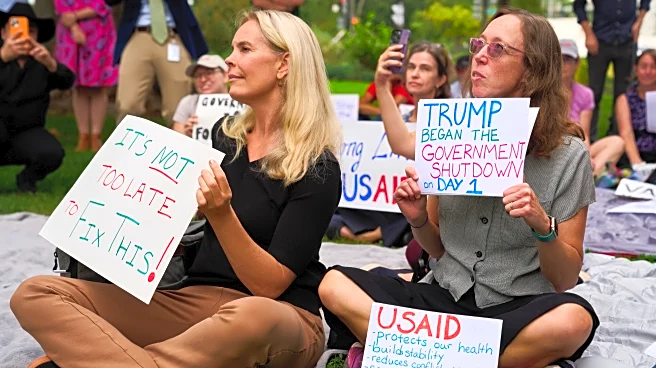What's Happening?
The Trump administration is on track to cut one-third of the Environmental Protection Agency (EPA) staff by the end of 2025. This follows previous reductions, with 23% of personnel already terminated. The proposed budget for the fiscal year starting October 2025 includes a 9% drop in full-time-equivalent positions. These cuts are deeper than past efforts, with historical comparisons to reductions under President Ronald Reagan. The staffing changes are expected to impact the agency's ability to conduct research, enforce environmental laws, and oversee toxic site cleanups.
Why It's Important?
The reduction in EPA staff could have significant implications for environmental protection and public health in the U.S. With fewer resources, the agency may struggle to fulfill its responsibilities, potentially leading to increased pollution and health risks. The cuts also raise concerns about government transparency and the ability to hold polluters accountable. The long-term effects could include weakened environmental regulations and diminished capacity to respond to environmental crises.
What's Next?
The proposed cuts are subject to congressional approval, and there may be debates and negotiations regarding the EPA's budget. Environmental groups and public health advocates are likely to oppose the reductions, potentially leading to legal challenges or calls for policy reversals. The administration may need to address concerns about the impact on environmental enforcement and research capabilities.
Beyond the Headlines
The staffing cuts could lead to ethical and legal challenges, as reduced enforcement may embolden polluters. There may also be cultural shifts as public perception of environmental protection changes. The situation highlights the tension between economic priorities and environmental stewardship.











